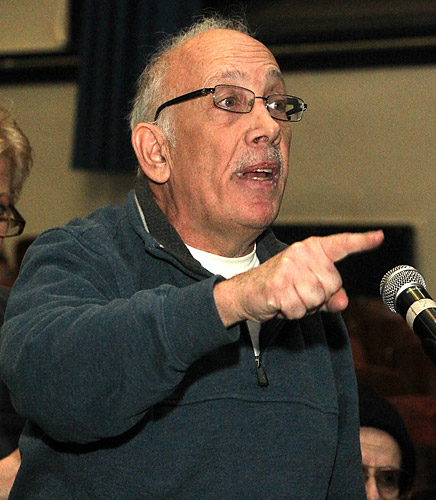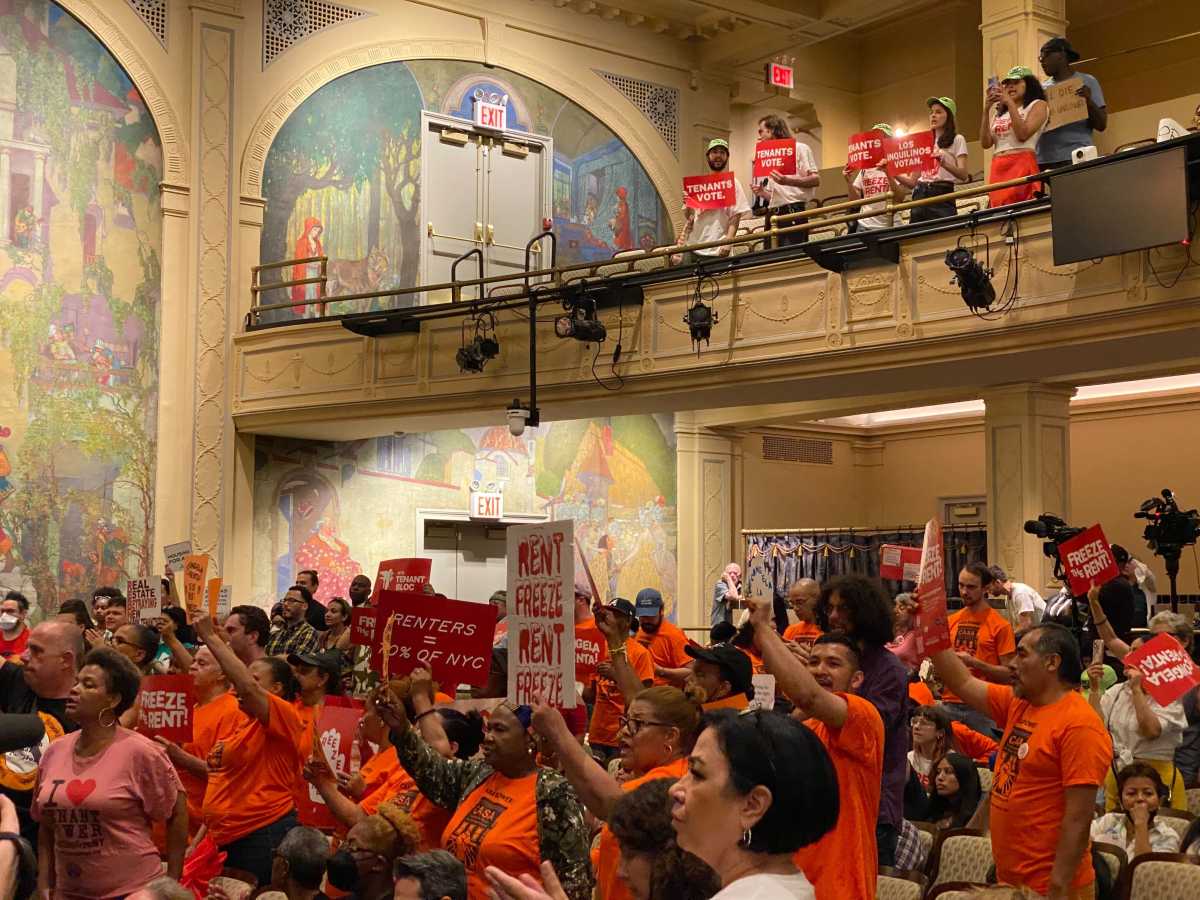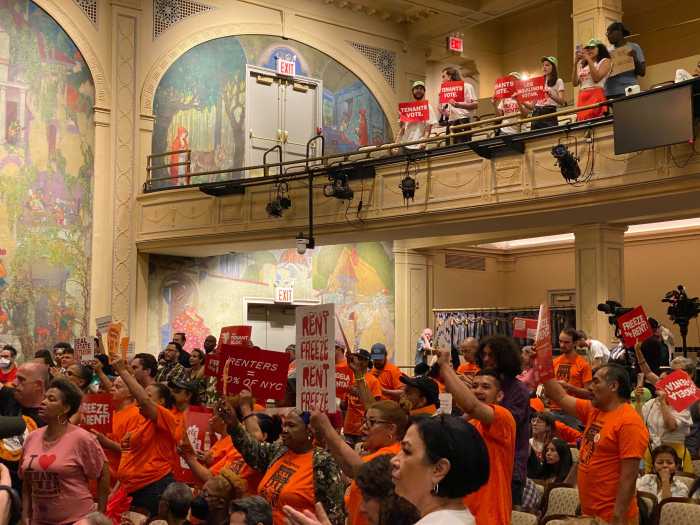This is really going to stink!
Construction of a 40-story residential tower that will sit atop a toxic field in Brighton Beach can’t begin until the site is cleaned — and that job is going to smell to the high heavens, the state told neighbors last week.
Chemicals including coal tar that are locked in the soil beneath Trump Village Shopping Center on Neptune Avenue at West Fifth Street will have to be carted away — and when they are, it will unleash a distinctly nasty odor.
“It smells like mothballs mixed with something that has been badly burned,” Gardiner Cross, a geologist with the Department of Environmental Conservation, said at a hearing on the plan at Lincoln High School on Feb. 12.
Before owner Rubin Schron can build a planned 40-story tower on the site of Trump Village Shopping Center, National Grid — which acquired the company that owned a former manufactured gas plant that once occupied the site — must remove the pungent pollutants that are trapped in the soil, which also contains cyanide, mercury, manganese, selenium, and an array of other chemicals and pesticides, according to a 2011 report.
The shopping center lot used to host the Dangman Park Manufactured Gas Plant, which operated from the 1880s to 1918. The soil was never cleaned before construction of the shopping center but Cross said the foundation of the shopping center has stopped residents from being exposed to the pollutants, and remediation is only necessary if the building is demolished — as its owner plans to do, to make way for the residential tower.
“The buildings and the pavements that sit on top of sites — that prevents any contact,” said Cross, adding that unless the contaminated soil is disturbed, the pollutants should stay capped. “We think it has gone about as far as it’s going to go.”
National Grid, which will pay for the cleanup, is responsible for presenting a cleanup plan to the Department of Environmental Conservation, but the company said it has not revealed the plan because the property owner has not yet presented a development plan.
The Department of Environmental Conservation said that because there isn’t a plan yet, it can only provide examples of past cleanup remedies used on some of the hundreds of manufactured gas plant sites throughout the state. Past methods have included capping the contaminants and excavation and removal of the toxic soil.
To trap the odor inevitable with the excavation of coal tar, Cross said workers would erect a large tent over the worksite and spray odor-control foam around the area. He said the trucks that transport workers and supplies are also cleaned before leaving the site.
“We haven’t had an odor complaint from a truck leaving a site in over a decade,” said Cross.
But an elected official at the meeting said that rather than worrying about the smell, he is more concerned about the health effects of the foul fumes — especially since many residents who live nearby are especially vulnerable to health threats.
“We have those that are sick, those that are frail, and those that cannot fend for themselves,” said Councilman Chaim Deutsch (D–Sheepshead Bay).
The cleanup process is scary, said to one local, but it is also terrifying to think about how the 40-story tower will affect the community that residents worked for generations to build.
“We have a right to the people that put their hearts and souls and their lives in a place to live here to leave something for their children,” said Sol Cooperman, the president of Trump Towers in section three. “And for what?”


























